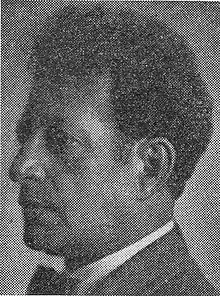Emmanuel Metter
Emmanuel Leonievich Metter (February 28, 1878 – August 28, 1941) was a Ukrainian conductor.[1][2]
Emmanuel Leonievich Metter | |
|---|---|
 | |
| Born | February 28, 1878 |
| Died | August 28, 1941 (aged 63) |
| Occupation | conductor |
Emmanuel Metter was born in Kherson, Ukraine, in a Jewish family running a business. He entered the faculty of medicine at the Kharkiv National University on August 26, 1897; however, he transferred to the faculty of law on September 7, 1898, graduated in 1906 and became a lawyer. He then entered the Saint Petersburg Conservatory as an unregistered student in September 1906 and studied under Nikolai Rimsky-Korsakov and Alexander Glazunov. He left the conservatory in May 1907, taught at Moscow Conservatory and conducted at the Bolshoi Theatre. When Metter was a conductor at the opera house in Kazan, Russia, he married Elena Osovskaya, a Polish prima ballerina of the opera house.
Right before the Russian Revolution (1917) they exiled themselves to Harbin, Republic of China and Metter became conductor of Harbin Symphony Orchestra. In early 1920s Osovskaya was invited to become a professor at the Takarazuka Revue in Takarazuka, Hyogo Prefecture, Japan, then Metter moved to Japan also in March 1926. They lived in Kobe, Hyogo Prefecture[3] and Metter succeeded Heinrich Werckmeister and became conductor of the NHK Osaka Broadcasting Station (JOBK) Orchestra in Osaka, Japan. He also conducted Kyoto Imperial University orchestra for more than ten years. Metter taught many significant Japanese musicians, such as Takashi Asahina and Ryoichi Hattori.
Metter and Osovskaya moved to Los Angeles, California on October 6, 1939. Metter died on August 28, 1941 in West Hollywood, California of heart disease. Osovskaya died in 1964 at the age of 83. Metter and Osovskaya are buried in Hollywood Memorial Park Cemetery.
References
- Much of the content of this article comes from the equivalent Japanese-language Wikipedia article. Retrieved on December 5, 2009. The following references are cited by that Japanese-language article:
- Okano, Ben (1995) Mr. Metter. Ritto Music
- Nagahiro, Toshio (Ed.) Father of Kansai Music World, Emmanuel Metter. NHK Osaka Broadcasting Station
- Metter House(in Japanese))